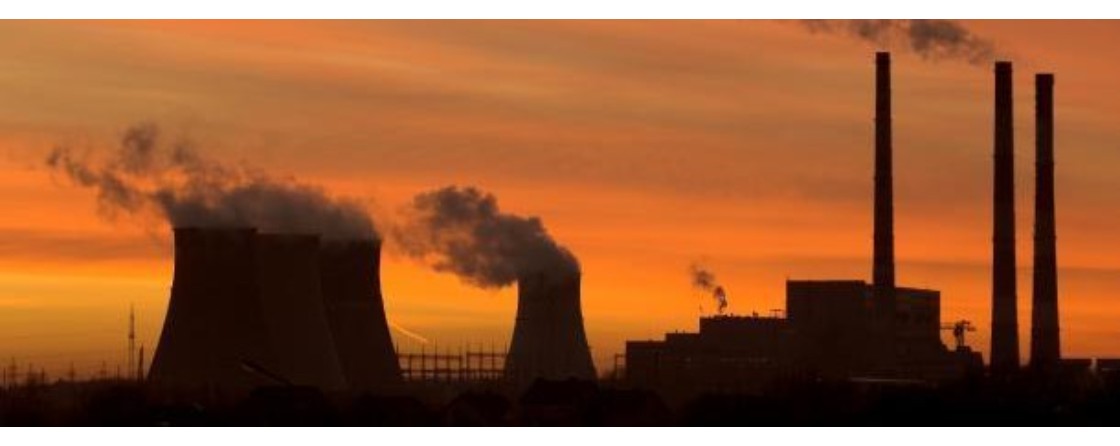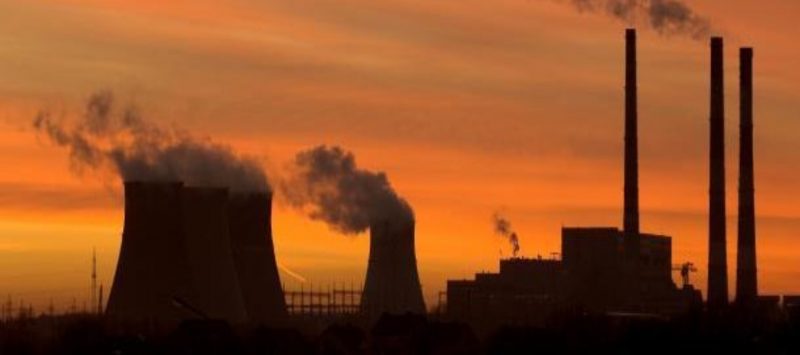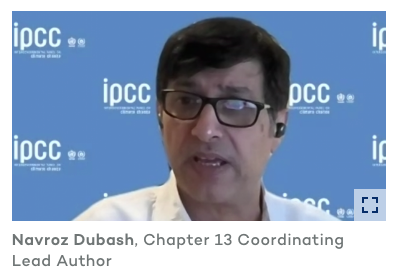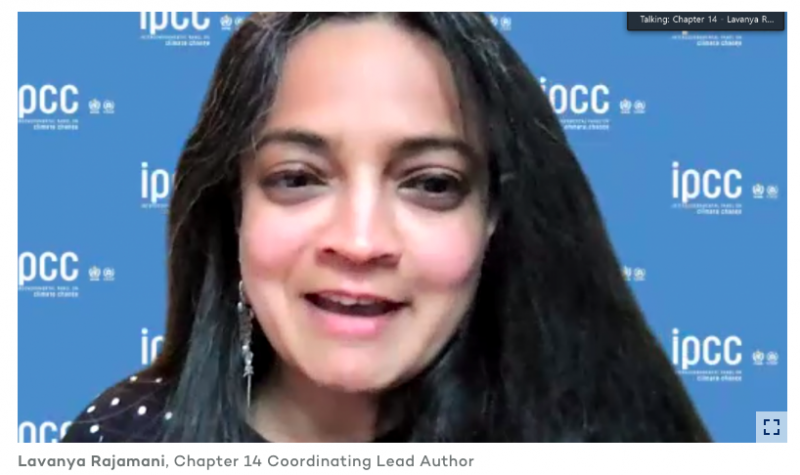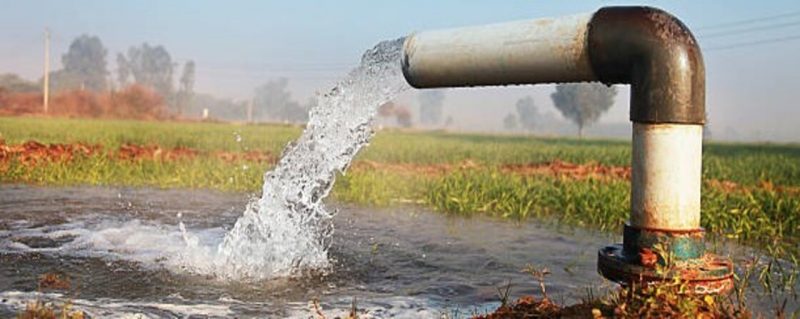Date: 29th March 2022
Speakers:
Mr K.P. Bakshi, Former Chairperson, Maharashtra Water Resources Regulatory Authority will be in conversation with Dr Abha Yadav, Associate Professor, Indian Institute of Corporate Affairs and Director of the Forum of Indian Regulators (FOIR) Centre at IICA, Dr Srinivas Chokkakula, Ministry of Jal Shakti Research Chair – Water Conflicts & Governance and Fellow, Centre for Policy Research and Ms Arkaja Singh, Fellow, State Capacity Initiative, Centre for Policy Research.
The background note can be accessed here.
Conversation summary:
Background to the establishment of the MWRRA
In the period around 1995-1996, the new political establishment in Maharashtra recognised that the state water resources department was not in a position to continue financing various ongoing irrigation projects. In order to raise finances for the sector, five irrigation corporations for the five river basins were conceptualised – one each for the Narmada, Tapti, Godavari, Krishna, and Konkan region. These corporations floated bonds for private markets and the general public to invest in. The funds so raised were then used to complete ongoing projects. Alongside continuing pressures to finance new projects, the World Bank stepped in for the Maharashtra Water Sector Improvement Project albeit with pre-conditions. One of the conditions was that the government had to set up a regulatory authority to ensure prudent use of funds. This led to the State Water Policy of 2003, the Maharashtra Water Resources Regulatory Authority Act and Maharashtra Management of Irrigation Systems by Farmers Act of 2005.
One-third of the reservoirs in the country are in the state of Maharashtra and water is a driver of economic development in the region. The establishment of the MWRRA in 2005 is a critical milestone in water sector development in Maharashtra.
The role of the MWRRA
The primary role of MWRRA is to figure out how to equitably and judiciously distribute limited water resources. The regulator needs to ensure that every user in each sector gets their allocation (as set forth by the Cabinet), has to recover charges, and minimise disputes. The mechanism to ensure this was that the MWRRA would set the tariff, the quantities to be allocated to each sector including users, and stop thinning of resources of the state government. The regulator must also prioritise projects such that the ongoing projects were completed first, especially those that were in the last leg of completion. Overall, the regulator undertakes the job of clearing projects sent by the state government, fitting these projects within the integrated water plan, and prioritising them. Further, the regulator also advises the government to raise awareness about water conservation, efficiency etc.
Regulatory independence
The creation of any regulator, including in this instance, a water sector regulator, is testament to the government’s preparedness to part with its powers and let another agency regulate and develop the sector. Further, generally, stakeholders do not have sufficient faith in the government to carry out regulatory functions. Their confidence is bolstered by the putative apolitical nature or independence of the regulatory agency. The establishment of regulators has not taken-off in the water sector as it has in several others. Now, however, the Union Government has stepped-up its focus on water resources, and with missions such as the Jal Shakti, many states are working quite actively on this. I am aware that states such as Meghalaya and Tamil Nadu are working actively on this sector, and others like Punjab and Haryana have already set up water sector regulators. Compared to older regulatory agencies such as the Telecom Regulatory Authority of India (TRAI), Tariff Authority for Major Ports (TAMP) or the electricity regulatory commissions at the state level, water regulators are fairly new. Further, water is a sensitive subject and can become a big political issue if handled incorrectly, therefore, these regulators have matured slowly.
The MWRRA Act itself has granted some level of independence to the authority. The selection process is such that the members and chairperson of the MWRRA is appointed by the governor on the recommendation of a committee headed by the chief secretary. The entire process is routed through bureaucracy, not elected representatives, for scrutiny of experience, eligibility and so on.
The MWRRA’s regulatory role
The government entities connected to water regulation are the 5 irrigation corporations, the Maharashtra Industrial Development Corporation (which has set up different industrial estates across the state), 27 municipal corporations, 289 municipalities (Categories A, B and C), all rural gram panchayats and zila parishads. Gram panchayats are individually regulated entities that have to adhere to the regulatory orders of quantities fixed for per capita consumption or amount to be recovered from each household. These are finally decided by the rural and urban development departments, but the broad tariff of bulk supply is decided by the MWRRA.
In the private sector, all industrial houses who directly draw from the reservoirs (bulk supply) are regulated by the MWRRA.
When I was in the MWRRA, we had proposed a fourth category of users (besides industrial, agriculture and domestic), that is, commercial establishments (water sports, clubs, swimming pools, IPL) where water is used for leisure or luxury. Commercial and industrial sectors are dominated by private players whereas most government institutions come under the domestic category.
Each river basin is supposed to have a river basin plan. The water allocation given by the tribunal for that particular river basin has to be used properly – hence the plan reflects the water received, water already being stored in existing projects and the remainder. The downstream areas are potential sites where the water can be stored. Based on such details, the river basin plan is drawn-up and the 5 water basin plans, together, become the Integrated State Water plan. This is the most important document for the MWRRA and the state government. Once approved, this document is referred to in the process of clearing projects. It sets the allocation for each category of use, and the projects which can be cleared (constructed or completed).
Awareness and participation of people/ activist groups/ unions in water sector development
There are competing interests that exist in this sector, and these precede the MWRRA. Thus, it is very difficult for the authority to set these right in a short span of time. For instance, the Godavari starts from Trimbakeshwar, goes to Nashik, Ahmednagar, entire Marathwada, then flows through Andhra Pradesh, Orissa and out. Before the setting-up of the MWRRA, there was an opportunity to set up many reservoirs. As a result, much of the water of Godavari was getting stored at Nashik. As a result, Jayakwadi and other regions in Marathwada did not get ample quantities of water. Thus, an inter-regional conflict started, with pressure from the Marathwada side to release water and pressure from Nashik to not release water. The MWRRA had stipulated that 65% of the reservoirs in both Nashik and Marathwada were to be filled up. Both sides fought this issue right up to the Supreme Court. Luckily, the dispensation given by the MWRRA was upheld by the apex court, because it felt that the resolution was judicious and equitable and that it was within the domain of the regulator.
There are also individual conflicts – well to well, farmer to farmer, taluka to taluka. These disputes come to the Primary Disputes Resolution Officer, who is normally a superintending engineer level officer of the Irrigation Corporation, and this order can be appealed before the MWRRA.
Many NGOs work in this field – Pani Foundation, Indus Water Institute, to name a few. These organisations feed information from the ground to the MWRRA, and this is helpful because the authority’s staff positioning is insufficient for it to be present in every part of the state. These inputs from NGOs help the authority in framing policies in a way that is acceptable to all stakeholders.
The MWRRA records all criticism, deliberates internally and accepts what it can, while more complex suggestions are kept aside for further consultation with the government. Criticism has helped the authority to mature and come up with policies that have not been challenged on too many occasions. Until May 2020, 60 disputes had come in since the authority’s inception and 38 were resolved. Save for the Jayakwadi case, none of them have been challenged in the High Court or the Supreme Court. This demonstrates people’s acceptance of the regulator’s actions.
How is the water sector different from other sectors in terms of regulation?
There are several distinguishing factors:
- Water is absolutely essential for every household and livelihood, whereas electricity, telephone and so on come further down the hierarchy of necessities. This also implies that we cannot tweak water tariff or quantity my huge margins.
- Electricity will only flow through the wires that are placed, but water will flow through anywhere depending on the gradient, which cannot be changed. Thus, water has a particular flow pattern that is not under the control of any authority.
- One can switch off the electricity line of a place, say because of non-payment of dues, but stopping water from a dam is not possible because there are several other pockets where water has to reach because they have duly paid.
- Water regulation is a new area. Many states have not even understood the concept of a water regulator, and states like Punjab, that have come out with a regulator, do not charge the agricultural sector yet. In Maharashtra, it has matured to the extent that farmers also pay charges.
- While water is a natural resource, the collection, distribution and management system for water has to be done by someone and hence there is a need for a tariff/ charge. People are starting to realise the importance of paying tariffs and paying them on time to ensure timely delivery of water.
Regarding tariff rates for bulk use
There is a process for deciding the tariff structure:
- According to the MWRRA Act, the tariff rates have to change/ be reviewed every three years.
- The benchmark is the last tariff rate. Depending on this, the state government projects the cost of escalation, maintenance, etc. and then the water tariff is increased in the industrial sector, domestic and agricultural sectors.
The industrial sector bears the burden of 60-61% (Rs. 600 crores) of the total revenue collected as per MWRRA tariffs, though their water allocation is 10% and they use only 4%. Around 300 crores is coming from the domestic users (district nagarpalikas, etc.), and 100 crores from the agricultural sector. There needs to be an effort to reduce the load on the industrial sector. The domestic sector’s share should be increased. The farming sector is highly stressed in terms of input costs, hence the MWRRA decided that farming sector tariffs will not cross 3% of the total inputs (this is a directive from the government).
With this broad structure in place, the tariff rates are then opened up for public comments. The MWRRA has now made a portal for this – earlier prominent actors (state departments, NGOs, MIDC, etc.) were invited for comments, but now everyone can provide comments on the portal and every comment will receive a response on how much of their feedback has been taken in and reasons for not accepting it. These comments are used in finalising the tariff structures.
Working with local bodies to reorient institutions
In the water tariff structure and policies it declared in January 2018, the authority put some restrictions on the Urban Local Bodies regarding discharge of used water. It suggested that such water needs to be properly discharged in the river or nala or the ULBs can sell it. Prior to 2018, the water treated by ULBs was discharged into the river and it again became the property of the water resources department. Earlier, the local bodies would treat water because of court orders, the state government or the Pollution Control Board. Now, there is a big shift in that the ULBs are mandated to treat water but they become the owner of the treated water. This is because the MWRRA said that whatever the body treats becomes its property. Earlier, the water resources department earned revenue from the freshwater, and again after the local bodies discharged the treated water, the department earned revenue from the use of the treated water. Now, the local bodies sell the treated water, with the MWRRA adding a condition that when the body sells it to a farmer it shouldn’t exceed 65% of the freshwater cost. This is because, if the treated water was priced the same as freshwater, the user would not be incentivised to buy the former. For industries, the MWRRA permitted the local bodies to mutually decide with the industry on the cost of the treated water; there was no cap. If the industry finds that taking freshwater from a distant reservoir is more expensive than taking treated water from the local corporation, it will prefer the latter. The local authorities could also come to a mutual arrangement where the pipelines could be laid so that the industry could further treat the water to bring it to the required purity.
The Commissioner of the Aurangabad Corporation considered this a good revenue-generation option. The 2030 Water Resources Group from the World Bank, in Maharashtra, worked with farmers to convince them to take the treated water. The farmers were incentivised because this assured supply of water, not dependent on rainfall. Additional incentives were that the water was rich in content and costs were lower. The laying of pipelines was agreed to be done by the municipal corporations as well as the farmers themselves. Thus, because of the Commissioner’s initiative and the 2030 Water Resources Group conceptualising and pushing for this, Zalta became the first village to take treated water from the Aurangabad Corporation.
Powers of the MWRRA
Executive functions of the MWRRA include clearing projects, monitoring whether the authority’s orders are being followed, receiving feedback from users and the public about the orders. As for the legislative functions of the MWRRA – in the past 3-4 years, the MWRRA has been requested by the state government to frame rules because of paucity of time of state’s officers but also the expertise of the MWRRA. After the authority drafts the rules, it is opened for public comments and then sent to the government for final acceptance. The MWRRA also drafts the regulations, which are then sent to the state government for acceptance. In terms of adjudicatory functions, so far, 38 disputes have been resolved in the last 3-4 years, as compared to 11 in the last 11 years. Awareness is also gradually spreading. Earlier, the authority needed visibility in the districts but now people are considerably more aware that the MWRRA is the go-to authority regarding water tariffs, etc.
MWRRA’s quasi-judicial power (equivalent to civil court): [Dr. Warghade] The first petition before the authority was against the government body with respect to the privatisation of one of the dams. The regulator could assert its power, in a first for a regulatory body, by asking the government body to withdraw the Expression of Interest for the privatisation process, and by taking up the role of vetting revenue of any such future privatisation projects. This makes MWRRA as a peculiar and independent regulatory body. [Mr. Bakshi] The Code of Civil Procedure gives the MWRRA power to seek information and presence of senior officers, and to go for prosecution in case of default. The MWRRA of course has never gone for prosecution because the relationship with the dept would be jeopardised. Generally, the department and the regulator have maintained a complementary relation.
Role of the State Water Council and Integrated Water Resource Management Plan
The river basin plans are prepared by expert committees and then integrated. It finally goes to the State Water Board, which is headed by the Chief Secretary, and Secretaries of the water resources department, finance department, planning department, and the Command Area Development Authority. They examine it to see if the plan will work for the next 10-15 years and then recommend it to the State Water Council, which comprises the CM and nine ministers. The Council gives its final approval. This is an effective mechanism. For instance, when the Godavari plan was made and sent to the Council in 2017, the Council objected to only one point – in the upper side of Nashik, the state water plan prohibited small reservoirs and village tanks. The expert committee, headed by me then, had made this recommendation because it found that there were already many reservoirs upstream and if village tanks were permitted then no water would reach Jayakwadi and downstream. The State Council however said that it is too stringent, and that although the area had big reservoirs the villagers needed small tanks. Thus, the State Council formed a study group for this aspect and approved the rest of the plan. On the basis of the Godavari plan, the Krishna, Narmada and Tapti plans were prepared and integrated.
Composition of the MWRRA
MWRRA has a chairperson and four experts – one each from law, economics (water economics/development economics), engineering (dam construction/water construction/maintenance/water flow/evaporation/losses), and the field of groundwater. The engineering expert is usually a former Secretary of the Irrigation Department, the law expert may be anybody from the field, the economics expert comes from academia (former professors who have taught water economics and agriculture), whereas the groundwater expert is usually a former employee of the Union/State government or ex-member of the Groundwater Survey and Development Agency of Maharashtra.
The administrative structure is headed by a Secretary, independently appointed by the MWRRA, but the practice has been that someone from the government is posted on deputation for 3-4 years and then returns to the government. Below this level, there is the permanent staff, contractual staff and consultants who come from the water sector and help with a specific project or for a survey, impact study, creating a portal etc.
I think the state government should think of merging the administrative staff of all the regulators – registrar, finance officer, administrative officer, clerks – and create a hierarchy. This was a proposal we had made to the state government. Otherwise, if you are in one regulator’s office, with hardly 10-15 employees, there is hardly any scope for growth.
Dynamic between MWRRA and the state department regarding scope of function
The history of water resources departments across the country will reveal that they are construction-oriented – construction of dams, maintenance of canals, release of water and in certain states, recovery. Use efficiency, water conservation, micro-irrigation were not issues in focus for water resources departments except for CADA in certain years.
In Maharashtra, the MWRRA and the state dept complement each other’s’ efforts. This is due to a few reasons:
- The department realises that the MWRRA approves/ blocks projects on technical grounds and not for political reasons.
- The MWRRA also needs inputs from the field that the department provides.
- The department understands that reasonable projections, if accepted by the authority for the purposes of revenue collection, would allow it to generate monies which it otherwise would not be able to collect.
Way forward for the MWRRA, issues and challenges
- Groundwater development: The Groundwater Development Act was passed in 2009 but it took a long time for the water supply and sanitation department to frame the rules. While they have now been framed, the final comments are yet to be decided and the rules are to be notified into existence. The State Groundwater Authority was merged with the MWRRA but nothing has been done from the authority’s side because the enabling provisions have not yet come. There are critical areas in Maharashtra where water has been overdrawn and unless it is regulated now, the situation will only worsen. The MWRRA has so far only given some instructions to the Groundwater Surveys and Development Authority (GSDA). The GSDA has selected certain wells and is studying the groundwater recharge and use. There are about 35000 wells in the state that are monitored for recharge and withdrawal. If recharge is more than withdrawal, it is good but if the withdrawal is more, it is critical. If the recharge is very low and withdrawal very high, like in cash crop areas, it is highly critical and needs to be stopped. There are pockets in the state that have been identified as sensitive, and GSDA has been working in this area. The GSDA has claimed that in some of these wells the water level has gone up by 1 or 2 meters, which means that their control has been effective.
- Real-time data collection: The latest position of water storage in every reservoir, on a daily basis, needs to flow to the MWRRA and to the state department so that they are in a position to do the releases properly and avoid flooding in the downstream areas. For example, the Sangli floods could be avoided if there is real-time feeding of data so that one can prepare in advance for inflow of water. Real time feeding and management of data is not here yet. The MWRRA is supposed to procure and disseminate data to the district or state department authorities who store and release water. This is an important aspect that has not been done yet. Such a situation has arisen not due to budgetary allocations, which is often more than sufficient for MWRRA (at some point the authority even thought of returning the money because it was not able to spend all of it). The constraint was the time available to the authority – when it really thought of real-time data it had only one year left for conceptualising, tendering, etc.
- Water loss in the drinking water sector (theft, no revenue) and evaporation loss in reservoirs (too much surface area): There are no rules or studies on this, however, flatly 20% is taken as evaporation loss. This may be incorrect. One needs to study the problem and prescribe methods to curb the loss. The regulator has not been able to do much in this regard.
- Measurement: In South Australia, there are arrangements to release the desired quantity of water in your field irrespective of the physical presence of the person. This system of measurement and release is absent in India.
Cost-related issues
There are three kinds of costs: economic, development, and subsistence related costs.
Economic cost of 1 cubic meter of water is much higher in Maharashtra than in Odisha or Bihar. This is because the GDP conversion of 1 cubic meter of water in Maharashtra is very high compared to those states. Thus, we cannot get to an ideal economic cost immediately.
Development cost is the cost from construction of dams, maintenance, staff payments, all other incidentals. In a robust arrangement of the state government, we should have been able to recover the development cost at least.
Finally, there is the subsistence cost, below which the department cannot survive. Currently, recovery is at this level. We are nowhere near the development and maintenance cost, and the economic cost is out of question. The aim of the regulator is to gradually move towards the development cost.
In relation to drinking water supply, whatever cost is recovered from the household has to go for maintaining service standards, purity of water and supply at proper timings and in proper quantity. This is absolutely essential. What has happened is that despite the entity having enough water for the city, the arrangement or terrain is such that if the downstream areas keep getting more water beyond the slot given to them, while higher levels are getting water. Urban and rural local bodies have not addressed this problem, but now they are considering ways to fix the supply arrangement.
Commodification of water
The MWRRA always thought that if you give water as an input to a company for producing bottled water, the cost increases by many times. The input cost of water for bottled water was thus kept quite high, compared to the input to other industries.
The metering system was envisaged by the authority but the government wanted some time since they were not in a position to implement it.
Ensuring accountability and prevention of mismanagement of financial resources
The MWRRA has made provisions for water accounting. There are water accountants and auditors at the state level and levels below as well. There is the thinking that water auditing and budgeting should become part of the activities of MWRRA and there should be trained auditors. Once this is in the public domain, there is pressure on the entity to bring improvements. If you put the water audits in the public domain, half the job is done – people will hold the entity accountable, neither the state government nor the regulator need to do much.

